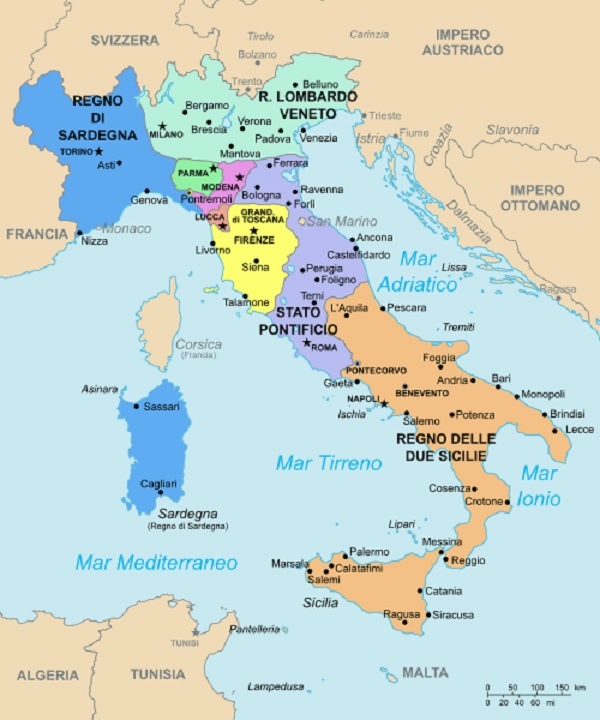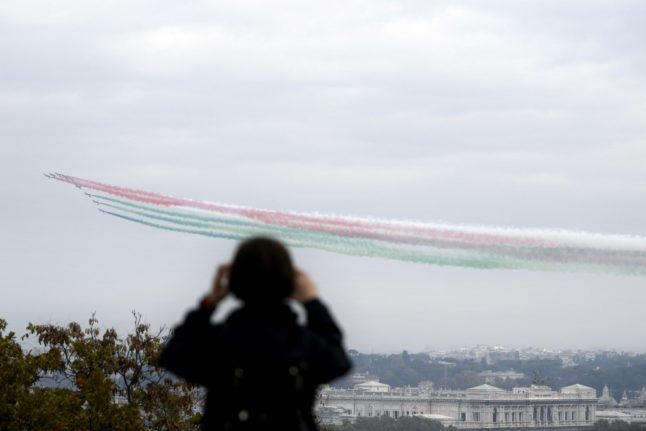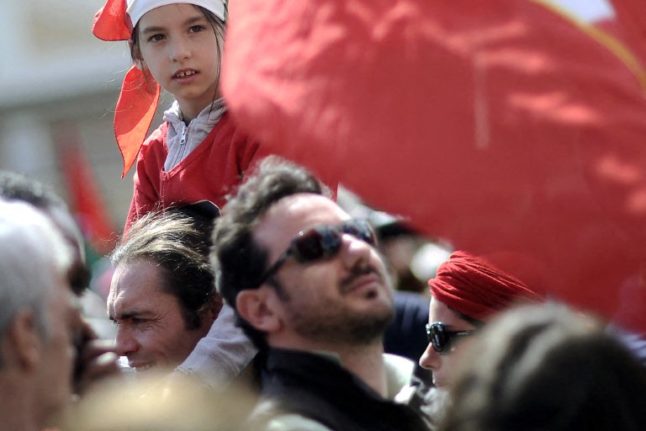Italians are well known for proudly displaying the tricolore – the nation’s flag – and it was an especially common sight amid the coronavirus crisis and lockdowns.
And on March 17th, such displays of national pride are even more common, as it is in fact the country’s ‘birthday’.
Known in Italian as La Giornata dell‘Unità nazionale, Unity Day is not a public holiday, but it’s a big deal to many Italians. So what’s the date all about? Here’s a quick historial primer.
The birth of Italy
Although Italy was the centre of the ancient Roman empire and is known for its treasures dating back millennia, as a country it’s actually very young – younger than the US, in fact.
The Kingdom of Italy was officially founded on March 17th 1861, so today the date is known as the Day of Unity or Unification.
Before 1861, the peninsula was fragmented, split into rival states and regions which had changed hands, allegiances, and boundaries frequently over the centuries. They included the Grand Duchy of Tuscany, the Duchy of Modena, the Papal States, Kingdom of Sardinia, Kingdom of Lombardy-Venetia, and Kingdom of the two Sicilies – see the map below.

Before unification. Image: WikiCommons
Italy’s unification wasn’t a single date, but a period of several decades during which a lot went on – think revolts, reforms, and wars. The unification or Risorgimento (literally ‘resurgence’) period is roughly defined as being between 1815 and 1870.
In the mid-1840s, things really got going, with a new pope on the scene and rising nationalism across the whole continent.
Meanwhile, Sardinia was emerging as a power, thanks to its king Vittorio Emanuele (more on him later), who was gaining recognition due to reforms and public works, and its prime minister Count Camillo di Cavour, who built up strategic alliances across Europe.
Sometimes through political alliances, other times by sending in troops, Cavour succeeded and Italy was finally declared a nation-state on March 17th, 1861.
The first king
The first king of the new Italy was Vittorio Emanuele II – you might recognize the name, since most towns and cities have a street named after him. There’s often a March 17th piazza or street as well, and others named after more key players in the revolution; Count Cavour, Giuseppe Mazzini and Giuseppe Garibaldi, for example.
Italians called him the Padre della Patria (Father of the Fatherland) and he reigned until his death in 1878. You can see his tomb at Rome’s Pantheon today.
Capital cities
With its central location and connections to the ancient empire, it seems natural that Rome is the capital of Italy. But that wasn’t always the case. The very first capital of Italy was in fact Turin.
Just four years later however, Florence took a turn at being capital city, before Rome was finally given the honour in 1871.
Why don’t we get the day off?
On special occasions, including the 150th anniversary back in 2011, Italians have indeed been treated to a day off work in celebration. Usually that means foregoing one of the other public holidays, such as Armed Forces Day on November 4th.
READ ALSO: How to make the most of Italy’s public holidays in 2023
Generally, Italy opts to mark the founding of the Republic on June 2nd, rather than the unification itself. On June 2nd in 1946, Italians narrowly voted (54 to 45) in a constitutional referendum to abolish the monarchy.
But although March 17th isn’t a public holiday, keep an eye out for the many displays of patriotism that mark the occasion, from Italian flags on display to celebratory events. Viva Italia!



 Please whitelist us to continue reading.
Please whitelist us to continue reading.
Member comments